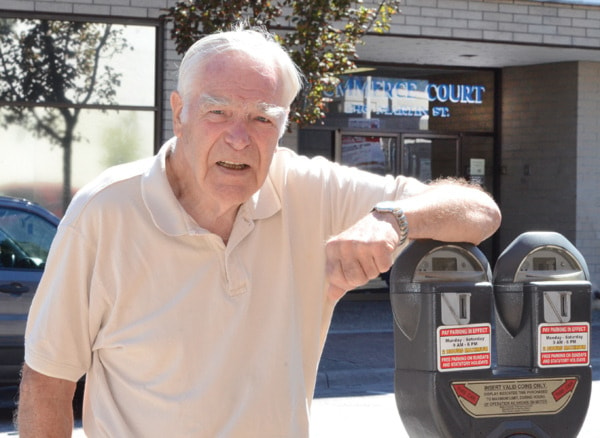A Penticton businessman is following through on a promise to oppose city council’s plan to revitalize a section of downtown Penticton.
Phil Locke, of Locke Property Management, first spoke before council at their June 17 meeting, expressing his opposition to the plan to make over a section of Martin Street and Westminster Avenue, part of the city’s new downtown plan.
Council approved the $1.25 million project on July 2, including a plan to recover nearly $300,000, about 25 per cent, of the costs from property owners.
Locke has already composed a two-page letter to distribute to other property owners in the area.
“They were going to do something similar in 2005, when they found out the opposition was such that they didn’t go through with it,” said Locke.
The Martin Street project, Locke contends, will do nothing to increase the customer base, making it a waste, not only of the money that the property owners will have to put in, but the larger portion of city funds.
The Martin Street project is just the first step of the new downtown plan, itself the result of more than a year of planning and consultation with the community and business owners.
According to Anthony Haddad, director of planning services, this project was selected because it will not only enhance the western entrance to the downtown core and the Martin Street entertainment district, but also build momentum and excitement about the downtown revitalization in general.
The current project includes a range of improvements, from replacing the sidewalk with decorative pavers to new street furniture, lighting and trees.
It also includes the installation of “flex parking” in the 200 block of Martin.
The concept, said Haddad, is to let business owners make better use of the space in front of their buildings.
Bollards marking off the parking areas can be shifted to allow room for sidewalk cafes, outdoor sales or other activities.
“The aesthetic of Martin Street will be significantly improved with the enhancements of the flex space,” said Haddad.
However, flex parking is one of Locke’s biggest concerns; he worries that it would reduce the amount of available parking.
“I own a fair amount of property on Martin Street,” said Locke.
“I have a building there with 20 offices.
“If I was full, I would need all the parking spaces that are there now.
“If they are going to reduce them by 50 per cent, I am going to lose opportunity to rent.”
Lock provides parking for tenants and their employees, but said the loss of street parking for customers would make his building less attractive for businesses.
According to Locke, the overall plan isn’t going to accomplish the goal of attracting people to the downtown.
15 years paying his share of the last downtown beautification plan, he said, and in his letter, he tells property owners that one didn’t attract people to downtown.
Locke goes on in his letter to suggest there are only two things that will revitalize downtown: a big box store or more residents living downtown. He admits, though, that the likelihood of any big box chain paying the high cost to locate downtown is unlikely.
“The only alternative is to have many four to six story multi-dwelling buildings within four blocks of the downtown core,” Locke writes. “With an extra 2000 people within walking distance, it will produce the customers that will generate other business and services, real revitalization.”
And that, he continued, would encourage someone open a mid-size food store. It may be a 10-year project, he writes, but the city needs to take a proactive role.
